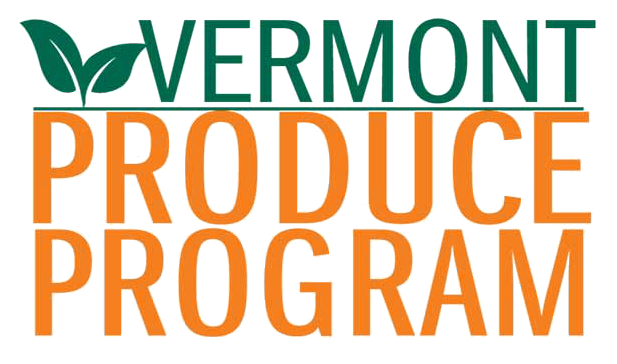
By Dominique Giroux, Vt Agency of Agriculture, Food & Markets
This is the seventh article in our series “Romaine Calm: Breaking Down the Produce Safety Rule.” You can find the full series at agriculture.vermont.gov/produceprogram/produce-program-news.
Buildings used for washing, packing, holding, and storing produce come in all shapes, sizes, and designs. However, when thinking about how to manage food safety risks, there are key best practices to consider. What’s great about addressing produce safety risks is that oftentimes making improvements can lead to increased efficiency, produce quality, and market access, to name a few benefits. Later in this article, we will share one produce farm’s wash/pack shed improvement and how it led to a wide array of benefits. For now, let’s explore produce safety risks to consider when it comes to building design.
The Food Safety Modernization Act (FSMA) Produce Safety Rule (PSR) has requirements pertaining to buildings that farms subject to the rule must follow. And while not all farms are subject to the PSR1, requirements related to buildings should be considered and can be applied on any produce farm. Buildings that are subject to the requirements of the PSR include:
- Any fully- or partially-enclosed building used for covered activities2, including minimal structures that have a roof but do not have any walls; and
- Storage sheds, buildings, or other structures used to store food contact surfaces (such as harvest containers and food-packing materials). (see 21 CFR §112.122)
While produce safety risks will vary on farms, below are some factors to consider when it comes to assessing produce safety in, and around, farm buildings and structures.
- Provide adequate drainage. In areas where normal operations release or discharge water (such as in a washroom or cooler), ensure proper drainage is in place to avoid standing water and condensate. Standing water can support the growth of pathogens, such as Listeria monocytogenes, and splash onto nearby produce or equipment causing an additional food safety risk.
- Assess building elements for produce safety risks. Floors, walls, ceilings, fixtures, ducts, or pipes as well as drip or condensate are all factors that should be assessed when identifying produce safety risks. For example, do you have ceiling rafters or beams in your packhouse that could harbor bird nests? Reduce the suitability of habitat by removing rubbish or consider placing wire mesh to act as a bird screen just above or under the beams to help prevent nesting.
- Develop pest management procedures. Consider the use of traps, keep the building exterior clear and free of debris and tall grass, remove trash and culls every day or as needed, keep pallets and produce boxes away from walls and off floors, and train workers to identify pest intrusion. While partially-enclosed structures may present added difficulties in pest management, measures can still be taken to prevent pests from becoming established. In this situation consider establishing a monitoring frequency to ensure you remove pests when present. It’s important to note that farms subject to the PSR must take measures to exclude pests from fully-enclosed buildings and must take measures to prevent pests from becoming established in partially-enclosed buildings (see 21 CFR §112.128).
- Identify domesticated animal risks. The PSR requires that covered farms3 exclude domesticated animals from fully-enclosed buildings where food contact surfaces, food-packing material or produce covered under the rule is exposed; OR separate domesticated animals by location, time or partition. Just like wild animals, pets can carry pathogens, and if they come into contact with produce, equipment, or food contact surfaces, pose an additional food safety risk.
- Provide proper hygiene facilities. Toilets, handwashing stations, and breakrooms are essential to support your food safety efforts to prevent contamination of produce, food contact surfaces and areas used for farm activities. (see 21 CFR §112.129 and §112.130).
- Keep it clean & organized. Sweep floors, remove cull piles, and clean, and when necessary sanitize equipment, tools and food contact surfaces. To learn more about cleaning and sanitizing, check out the fourth article in this series here: https://go.usa.gov/xmyyV
As mentioned, produce safety upgrades can lead to improvements in efficiency, product quality and other on-farm benefits. New Leaf CSA received a Produce Safety Improvement Grant in spring of 2018 to upgrade their wash/pack area to a fully-enclosed building, add a cold storage unit, and install stainless steel counters and a sink for produce washing and handling. In addition to produce safety improvements, Elizabeth Wood, owner, mentions project upgrades have allowed them to extend their storage season and ultimately increase the amount they can produce for winter sales. This, Elizabeth notes, will hopefully increase the overall production and profitability of the farm. Read next month’s Agriview to learn more about New Leaf CSA’s project improvements.
The Vermont Produce Program and the UVM Extension Produce Safety Team can work with individual produce farms to prioritize areas for improvement and provide additional support and resources to help with implementation of produce safety practices.
UVM Extension and the Vermont Vegetable and Berry Growers Association (VVBGA) are hosting a summer series of on-farm educational workshops for commercial vegetable and berry growers. The workshop hosted at Root5 Farm on July 17th provides a great opportunity for farms to learn about pack shed design to improve efficiency and address produce safety needs. Read the full workshop description at http://go.uvm.edu/uvm2019twilight.
1If you have questions, are interested in an educational site-visit, or are unsure as to whether your farm is subject to the FSMA Produce Safety Rule, contact the Vermont Produce Program at AGR.FSMA@vermont.gov or (802) 461-5128
2Under the FSMA PSR, a covered activity means growing, harvesting, packing, or holding produce covered under the rule, on a farm.
3The term “covered farms” refers to farms that are subject-to or “covered” under the FSMA PSR.

